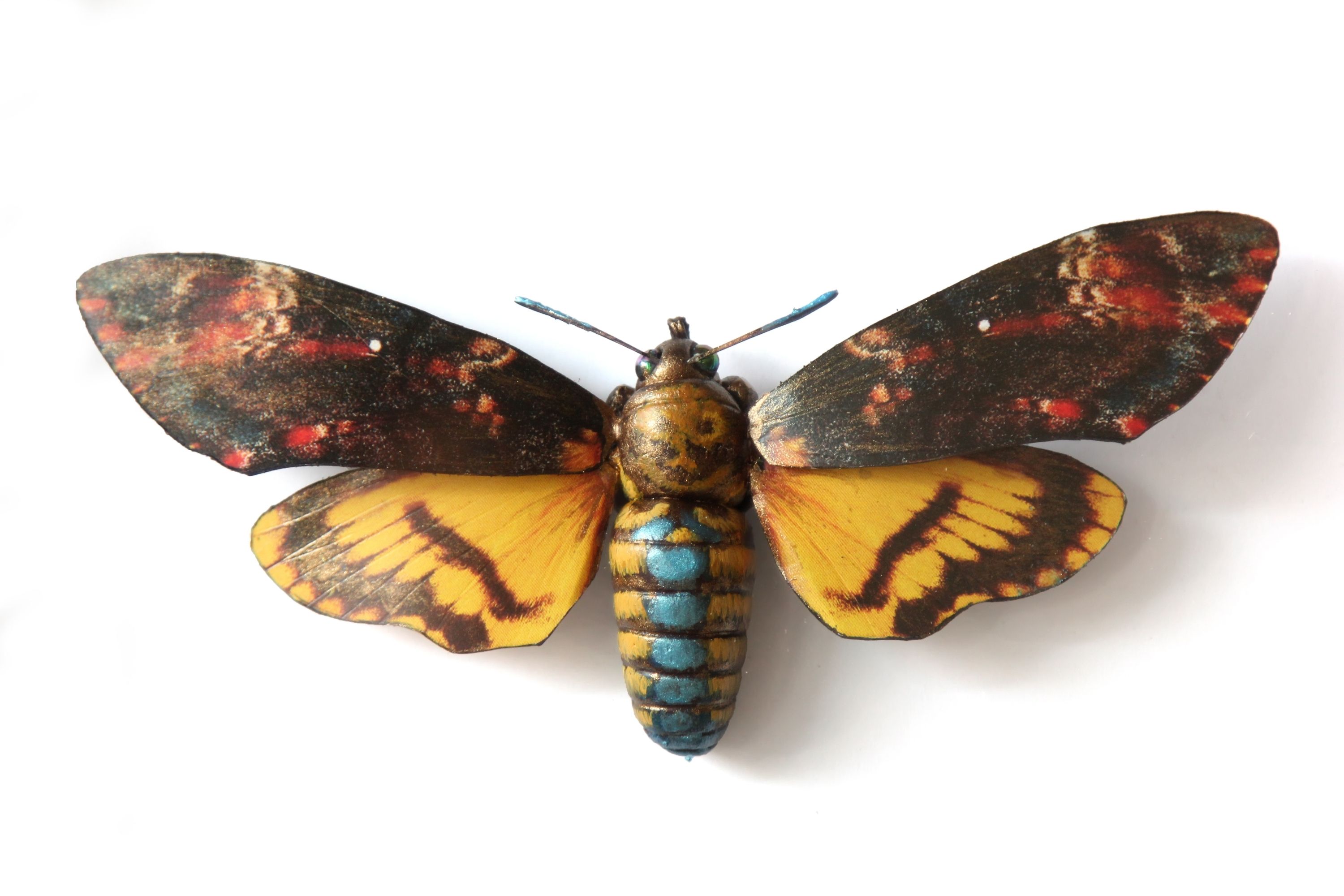African death's-head hawkmoth
(Acherontia atropos)

Description
Acherontia atropos, the African death's-head hawkmoth, is the most widely recognized of three species within the genus Acherontia (the other two being Acherontia lachesis and Acherontia styx). It is most commonly identified by the vaguely skull-shaped pattern adorning the thorax, the characteristic from which its common and scientific names are derived. The species was first given its scientific name by Carl Linnaeus in his 1758 10th edition of Systema Naturae. Death's-head hawk moths are large, ranging from 3.5 to 5 inches (80–120 mm) as adults. The upper wings are dark, creating a stark contrast between them and the lower wings, which range from a bright yellow to a light cream, yellow being the more common. A. atropos appears in popular media, including the films The Silence of the Lambs (1991), Dracula (1958), and The Blood Beast Terror (1967). It is commonly found in the southern part of Europe and throughout much of Africa, from where it is considered to be a native species. Annually, A. atropos migrates to parts of Britain, most numerously to the British Isles, where it is less commonly seen than in its native place of residency. The African death's-head hawkmoth (Acherontia atropos) is large hawk moth, and the largest moth in the British Isles and several other regions it inhabits, with a wingspan of 5 in (13 cm) (or 80–120 mm); it is a powerful flier, having sometimes been found on ships far from land. The forewings are a mottled dark brown and pale brown, and the hind wings are orangey-buff with two narrow dark bands parallel with the hind margin. The abdomen is a similar orangey-brown, with a broad, dark dorsal stripe. The most notable feature is a patch of short yellowish hairs on the thorax that gives the impression of depicting a human skull. It is a striking insect, but is seldom seen because it flies late in the night. Its wing and body structure is typical of that seen in the family Sphingidae. The upper set of wings are brown with hints of yellow, amber, charcoal and cream; the lower wings are yellow with two brown stripes fashioned in waves extending diagonally across the surface. At rest, the wings of the moth fold downwards, concealing the hindwings behind the forewings. The abdomen of A. atropos is robust and is covered in brown, feathery down. Yellow striping that highly resembles the colour patterns of a hornet extends part way across each abdominal segment.
Taxonomic tree:







